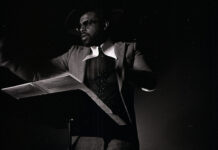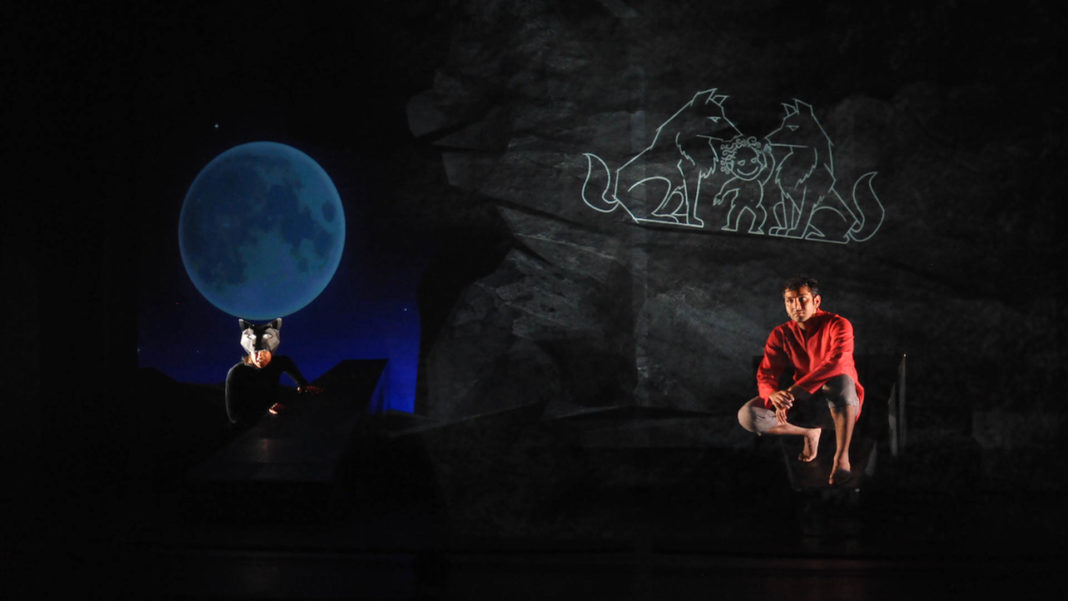Mowgli. Baloo. Shere Khan. Bagheera. There are two possible ways you know these names. The mostly likely is you’ve seen the Disney animated film The Jungle Book. The other is if you are familiar with author Rudyard Kipling’s original books (yes there were two.) Rick Miller, the co-writer and co-director of Jungle Book at the Pasadena Playhouse, grew up with both. But it was the books that resonated most with him and his co-creator Craig Francis when they chose to make a stage version that mixes classic storytelling with contemporary technology. The family-friendly show, which runs a swift 65 minutes, continues at the Playhouse through July 29th.
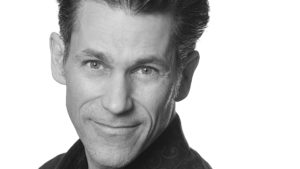
I spoke to Miller, who is Canadian, appropriately enough, on Canada Day where he was enjoying some rest and relaxation with his family. We discussed their take on these stories, how technology can be in service of entertainment and a little video he did that found him caught in a landslide with no escape from reality.
I know you grew up with the Kipling stories. How much do the visuals in the show reflect how you saw the stories in your own mind when you first read them?
That’s a good question. I can’t quite remember what I had in my mind because so much is affected by movies and what we see. I saw the movie as a kid and I studied architecture and a lot of this is motivated by certain key images. I had a sense there was something about the cycles of nature and life and I wanted spinning panels and I wanted to be immersed between two screens – front screen and rear screen – and feel the pull. I know from certain sketches, but I don’t recall if that came from childhood images. For now it’s how can we be just as playful as a novelist with words and filmmakers with pixels. How can we do that on stage with screens and lights and shadows.
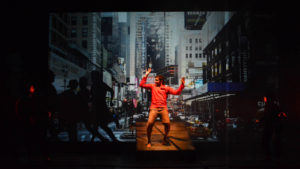
What role does architecture play in the story?
In our Jungle Book, Mowgli is a modern day architect and how do you build a city without complete disrespect where we feel we have to dominate nature and tame it. He goes back into his youth to remember the jungles to be a better architect. It’s a way of recognizing that nature has been around a lot longer than we have. We sometimes do things at our own peril. There’s a lot of me in Mowgli. The characters you create become manifestations of a certain part of you.
The role of visuals in theatre has exploded in the last 10-15 years. Have visuals become the most important tools in telling stories now instead of text?
I don’t think so and I hope they never do. I’ve been using media since I started my career 25 years ago and only at the service of the story. If you are doing a play in which video and media don’t do anything but save you money on sets and give you a cool background, it’s not a good idea.
Having only seen a promo for the show, it appears that Jungle Book shares some of Julie Taymor’s [director of the musical The Lion King] sensibilities. Is she an influence on this show?

I knew her before Lion King. I knew her from the avant garde work and she did pretty revolutionary work on Lion King. To me it was really appealing to, not so much borrow from Julie Taymor, who is using thousands of years of puppetry and masks, but find our own vision with shadow play and masks so you aren’t sure what’s real and what’s not. We’re playing with that in a very spirited way because Mowgli is like that. We’re trying to use the kind of person Mowgli has become.
Prior to Jungle Book you wrote and directed a show based on Jules Verne’s 20,000 Leagues Under the Sea. Both titles are perhaps best known for the Disney film versions. How much is your goal to reacquaint people with the original source material?
It has to be a piece of theatre and you have to celebrate the theatricality of the story. Mowgli’s story of a boy among wolves is so prone to theatricality. It’s what makes it relevant today. Why do we still need to hear this story about balance in the natural world? Because we still don’t live in balance with the natural world and we build cities in contrast to it and it bites us in the ass.
There was a time, many years ago, when you did a parody of Queen’s Bohemian Rhapsody. In the back of your mind were shows like Jungle Book where you ultimately wanted to take your career?
Bohemian Rhapsody was part of MacHomer which had the Simpsons doing Macbeth. It was a tribute to The Simpsons and Shakespeare. Did I know I wanted to create Jungle Book specifically? I wanted to be that combination of entertainer and educator. I wanted to be a multi-disciplinary artist. I wanted to be playful and have a sense of humor about myself and look at the world and reflect it with my own particular lens – which sometimes includes parody. I chose architecture only because it taught me to build something. The same principles apply to a good sketch and making a coherent play like Jungle Book.
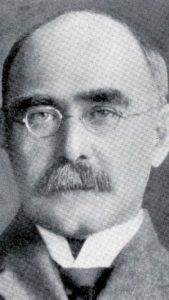
Rudyard Kipling said “If history were taught in the form of stories, it would never be forgotten.” If Kipling was telling today’s history, what kind of story would it be?
He would probably look on today as being not as unique as we think it is. We think the world has never seen the likes of such and such politician or story, but if we did learn better from history we’d find it much more cyclical than we think. If Kipling were living here like he did for many years it would be very different than if he were in Russia today. Nonetheless, I think he would have a very intuitive and piercing story about the way power works in the world. I’d love to hear what Kipling would say.
Main Photo by Gary W. Sweetman


